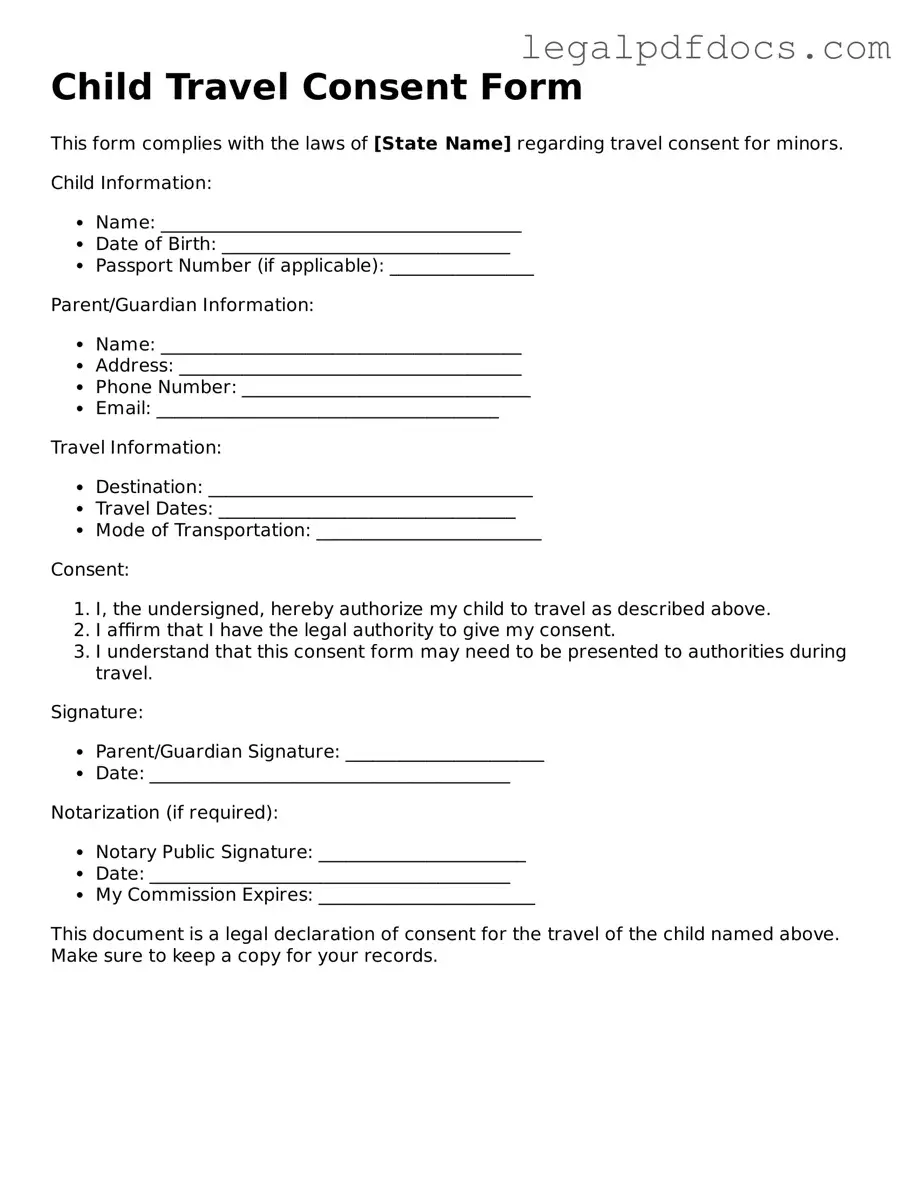Child Travel Consent Form Template
The Child Travel Consent Form is a legal document that grants permission for a child to travel with someone other than their parents or legal guardians. This form is essential for ensuring that all parties are aware of and agree to the travel arrangements, protecting the child’s safety and legal rights. If you need to prepare this form, click the button below to get started.
Open Child Travel Consent Form Editor Here
